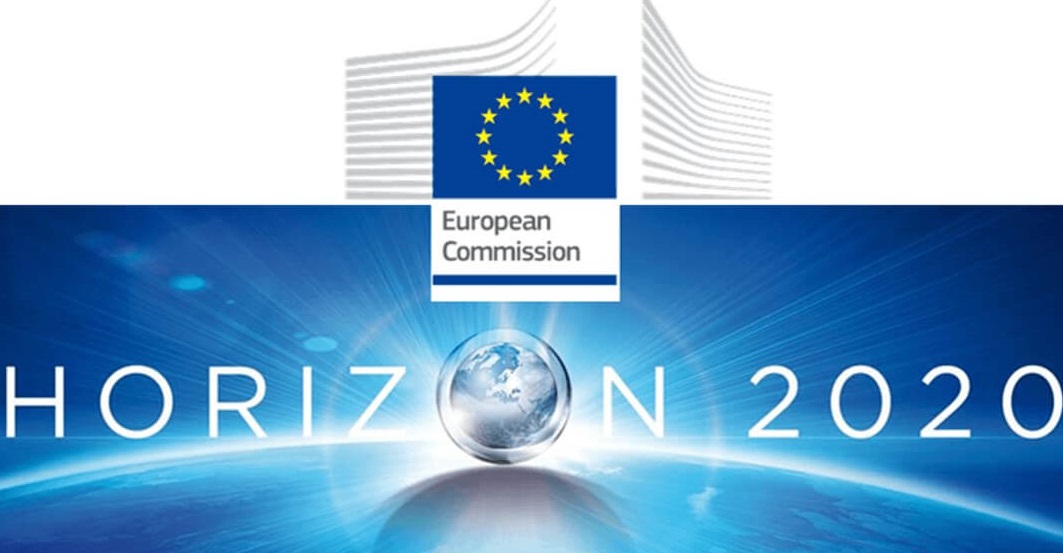Summary

This page is not updated regularly. Please visit my Linkedin and Twitter (@gyangMedIA) for the most recent information. Group Page: https://www.yanglab.fyi/. View my recent publications on my Google Scholar page.
I have PhD openings from time to time. Please see my group page for more details.
Call for Papers: Special Issue on Large Language Models (LLMs) and Cross-Modal Generative AI (https://www.computer.org/digital-library/journals/bd/cfp-llms-and-cross-modal-generative-ai) Please contact Lead Guest Editor: Dr Guang Yang for potential submissions.
Special issue call: “Federated Learning in Digital Healthcare: New Discoveries, Advances and Applications” (https://www.cell.com/patterns/special-issues/call-for-papers/federated-learning-in-digital-healthcare) in the Patterns journal (Cell Press). Please contact Lead Guest Editor: Dr Guang Yang for potential submissions.
Sensors Journal (Impact Factor: 3.576)
Deadline for manuscript submissions: 31 July 2023
Computational Imaging, Sensing and Analysis for Biomedical Applications
https://www.mdpi.com/journal/sensors/special_issues/computational_imaging_sensing
Frontiers in Cardiovascular Medicine (Impact Factor: 5.846)
Deadline for manuscript submissions: 02 February 2023
Generative Adversarial Networks in Cardiovascular Research
https://www.frontiersin.org/research-topics/45072/generative-adversarial-networks-in-cardiovascular-research
BMVC 2022 Proceedings (including e-posters/videos) are now available at: https://bmvc2022.org/programme/papers/
Dr. Guang Yang (B.Eng, M.Sc., Ph.D., IEEE Senior Member) obtained his M.Sc. in Vision Imaging and Virtual Environments from the Department of Computer Science in 2006 and his Ph.D. on medical data analysis jointly from the CMIC, Department of Computer Science, and Medical Physics in 2012, both from University College London.
Dr. Guang Yang is currently a Senior Lecturer and Associate Professor at the Bioengineering Department and Imperial-X. He holds a UKRI Future Leaders Fellowship (Round 5 Awardee). He was an Advanced Research Fellow working at the National Heart and Lung Institute, Imperial College London, and was affiliated with the Cardiovascular Research Centre, Royal Brompton Hospital. Dr. Guang Yang is also an Honorary Senior Lecturer with the School of Biomedical Engineering & Imaging Sciences, King's College London. He is a primary supervisor at the UKRI Centre for Doctoral Training in AI for Healthcare: AI4Health, KCL-Imperial EPSRC CDT in Smart Medical Imaging, and the Imperial MRes in Bioengineering and MRes Artificial Intelligence and Machine Learning programme.
He worked for Siemens Medical Solutions and Medicsight PLC before and obtained comprehensive industrial experience. He holds two international patents in the fields of medical image processing. His research collaborators are from Cambridge University, Oxford University, St. George’s, University of London, University of Lincoln, City University London, and University College London in the UK; NIH, Stanford University, and UCLA in the USA; Fudan University, Shanghai Jiao Tong University, Capital Medical University, and Sun Yat-sen University in China.
He has participated in many medical image analysis projects, including breast tumor image analysis using digital breast tomosynthesis (jointly funded by the Department of Trade and Industry and EPSRC); colon cancer computer-aided diagnosis and detection using CT imaging (funded by the Technology Strategy Board); multimodal advanced MRI analysis for brain tumor grading, classification, growth modeling, and therapy planning (funded by CRUK).
Guang has research outputs, including publications in world-leading journals, such as 1 Nature Biomedical Engineering (IF: 28.1), 1 Nature Machine Intelligence (IF: 23.8), 1 Proceedings of the IEEE (IF: 20.6), 28 IEEE Trans, 3 Information Fusion (IF: 18.6), and 2 Radiology (IF: 19.7). By Jan 2024, Guang has published 128 Journal Articles, 71 Peer-Reviewed Conference Articles, 2 International Patents, 3 Books, 7 Book Chapters and Editorials, H-index=46 and an overall impact factor of 955. He has seven publications as Highly Cited Papers by the Web of Science, and 1 publication as the Most Popular Articles award 2020 in the IEEE Transactions on Medical Imaging journal.
At Imperial College London, he was working on a cardiac MRI project funded by NIHR. Recently, he has successfully finished his British Heart Foundation funded project (Co-PI, PG/16/78/32402, 2017-2019) on the fast acquisition and quantitative analysis for the late gadolinium enhancement MRI images. He is now working on the EU European Research Council funded H2020 CHAIMELEON project (PI of the workstream, H2020-SC1-FA-DTS-2019-1 952172, 2020-2023), IMI DRAGON project (PI of the workstream, H2020-JTI-IMI2 101005122, 2020-2023), and Wellcome Leap Dynamic Resilience (Co-PI of the workstream, 2023-2026). He is supervising 4 PDRAs, 7 PhD students, 6 BSc/MEng (UROP) students, 4 MRes students, and co-supervising 7 additional PhD students with other PIs at the CDTs.
He is an investigator of the AI Assisted Diagnosis and Prognostications in COVID-19 team led by the Cambridge CMIH.
He was on the advisory board of Aladdin Healthcare Technologies and has industrial collaborations with NVidia and Boehringer Ingelheim. Dr Guang Yang is now actively collaborating with MindRank.ai.
Dr. Guang Yang was the General Chair of MIUA 2022 (26th Medical Image Understanding and Analysis Conference). https://www.miua2022.com/
Dr. Guang Yang was also the General Chair of BMVC 2022 (33rd British Machine Vision Conference). https://bmvc2022.org/
For journal special issue and conference call for papers, please visit my Linkedin and Twitter (@gyangMedIA) for updated information. My group website is: https://www.yanglab.fyi/.
Linkedin Google Scholar ResearchGate
Research Keywords:
Supported by:








Selected Publications
Journal Articles
Li Y, Zhang Y, Liu J-Y, et al., 2023, Global transformer and dual local attention network via deep-shallow hierarchical feature fusion for retinal vessel segmentation, Ieee Transactions on Cybernetics, Vol:53, ISSN:2168-2275, Pages:5826-5839
Nan Y, Tang P, Zhang G, et al., 2022, Unsupervised tissue segmentation via deep constrained Gaussian network, IEEE Transactions on Medical Imaging, Vol:41, ISSN:0278-0062, Pages:3799-3811
Nan Y, Li F, Tang P, et al., 2022, Automatic fine-grained glomerular lesion recognition in kidney pathology, Pattern Recognition, Vol:127, ISSN:0031-3203
Nan Y, Del Ser J, Walsh S, et al., 2022, Data harmonisation for information fusion in digital healthcare: A state-of-the-art systematic review, meta-analysis and future research directions, Information Fusion, Vol:82, ISSN:1566-2535, Pages:99-122
Chen Y, Schönlieb C-B, Liò P, et al., 2022, AI-based reconstruction for fast MRI – a systematic review and meta-analysis, Proceedings of the IEEE, Vol:110, ISSN:0018-9219, Pages:224-245
Jun C, Zhang H, Mohiaddin R, et al., 2022, Adaptive hierarchical dual consistency for semi-supervised left atrium segmentation on cross-domain data, IEEE Transactions on Medical Imaging, Vol:41, ISSN:0278-0062, Pages:420-433
Yang G, Ye Q, Xia J, 2022, Unbox the black-box for the medical explainable AI via multi-modal and multi-centre data fusion: a mini-review, two showcases and beyond, Information Fusion, Vol:77, ISSN:1566-2535, Pages:29-52
Roberts M, Driggs D, Thorpe M, et al., 2021, Common pitfalls and recommendations for using machine learning to detect and prognosticate for COVID-19 using chest radiographs and CT scans, Nature Machine Intelligence, Vol:3, Pages:199-217
Yu C, Gao Z, Zhang W, et al., 2021, Multitask Learning for Estimating Multitype Cardiac Indices in MRI and CT Based on Adversarial Reverse Mapping, IEEE Transaction on Neural Networks and Learning Systems, Vol:32, ISSN:2162-237X, Pages:493-506
Haldar S, Khan HR, Boyalla V, et al., 2020, Catheter ablation vs. thoracoscopic surgical ablation in long-standing persistent atrial fibrillation: CASA-AF randomized controlled trial., European Heart Journal, Vol:41, ISSN:0195-668X, Pages:4471-4480
Yang G, Chen J, Gao Z, et al., 2020, Simultaneous left atrium anatomy and scar segmentations via deep learning in multiview information with attention, Future Generation Computer Systems-the International Journal of Grid Computing and Escience, Vol:107, ISSN:0167-739X, Pages:215-228
Li M, Wang C, Zhang H, et al., 2020, MV-RAN: Multiview recurrent aggregation network for echocardiographic sequences segmentation and full cardiac cycle analysis, Computers in Biology and Medicine, Vol:120, ISSN:0010-4825
Zhang N, Yang G, Gao Z, et al., 2019, Deep learning for diagnosis of chronic myocardial infarction on nonenhanced cardiac cine MRI, Radiology, Vol:294, ISSN:0033-8419, Pages:52-60
Raschke F, Barrick TR, Jones TL, et al., 2019, Tissue-type mapping of gliomas, Neuroimage-clinical, Vol:21, ISSN:2213-1582
Schlemper J, Yang G, Ferreira P, et al., 2018, Stochastic deep compressive sensing for the reconstruction of diffusion tensor cardiac MRI, Lecture Notes in Bioinformatics, Vol:11070 LNCS, ISSN:0302-9743, Pages:295-303
Yang G, Yu S, Hao D, et al., 2018, DAGAN: deep de-aliasing generative adversarial networks for fast compressed sensing MRI reconstruction, IEEE Transactions on Medical Imaging, Vol:37, ISSN:0278-0062, Pages:1310-1321
Yang G, Zhuang X, Khan H, et al., 2018, Fully automatic segmentation and objective assessment of atrial scars for long-standing persistent atrial fibrillation patients using late gadolinium-enhanced MRI., Med Phys, Vol:45, Pages:1562-1576
Soltaninejad M, Yang G, Lambrou T, et al., 2018, Supervised learning based multimodal MRI brain tumour segmentation using texture features from supervoxels, Computer Methods and Programs in Biomedicine, Vol:157, ISSN:0169-2607, Pages:69-84
Soltaninejad M, Yang G, Lambrou T, et al., 2016, Automated brain tumour detection and segmentation using superpixel-based extremely randomized trees in FLAIR MRI, International Journal of Computer Assisted Radiology and Surgery, Vol:12, ISSN:1861-6410, Pages:183-203
Yang G, Jones TL, Howe FA, et al., 2015, Morphometric model for discrimination between glioblastoma multiforme and solitary metastasis using three-dimensional shape analysis, Magnetic Resonance in Medicine, Vol:75, ISSN:0740-3194, Pages:2505-2516
Yang G, Nawaz T, Barrick T, et al., 2015, Discrete Wavelet Transform Based Whole-Spectral and Sub-Spectral Analysis for Improved Brain Tumour Clustering using Single Voxel MR Spectroscopy, IEEE Transactions on Biomedical Engineering, Vol:62, ISSN:0018-9294, Pages:2860-2866
Yang G, Raschke F, Barrick TR, et al., 2014, Manifold Learning in MR spectroscopy using nonlinear dimensionality reduction and unsupervised clustering, Magnetic Resonance in Medicine, Vol:74, ISSN:0740-3194, Pages:868-878
Yang G, Jones TL, Barrick TR, et al., 2014, Discrimination between glioblastoma multiforme and solitary metastasis using morphological features derived from the <i>p</i>:<i>q</i> tensor decomposition of diffusion tensor imaging, NMR in Biomedicine, Vol:27, ISSN:0952-3480, Pages:1103-1111
Jones TL, Byrnes TJ, Yang G, et al., 2014, Brain tumor classification using the diffusion tensor image segmentation (D-SEG) technique, Neuro-Oncology, Vol:17, ISSN:1522-8517, Pages:466-476
Conference
Yang G, Chen J, Gao Z, et al., 2018, Multiview sequential learning and dilated residual learning for a fully automatic delineation of the left atrium and pulmonary veins from late gadolinium-enhanced cardiac MRI images, 40th Annual International Conference of the IEEE Engineering in Medicine and Biology Society (EMBC), IEEE, Pages:1123-1127, ISSN:1557-170X
Wu F, Li L, Yang G, et al., 2018, Atrial Fibrosis Quantification Based on Maximum Likelihood Estimator of Multivariate Images, 21st International Conference on Medical Image Computing and Computer Assisted Intervention (MICCAI2018), Pages:604-612, ISSN:0302-9743
Mo Y, Liu F, McIlwraith D, et al., 2018, The Deep Poincaré Map: A Novel Approach for Left Ventricle Segmentation, 21st International Conference on Medical Image Computing and Computer Assisted Intervention (MICCAI2018), Pages:561-568, ISSN:0302-9743
Shi Z, Zeng G, Zhang L, et al., 2018, Bayesian VoxDRN: A Probabilistic Deep Voxelwise Dilated Residual Network for Whole Heart Segmentation from 3D MR Images, 21st International Conference on Medical Image Computing and Computer Assisted Intervention (MICCAI2018), Pages:569-577, ISSN:0302-9743
Seitzer M, Yang G, Schlemper J, et al., 2018, Adversarial and perceptual refinement for compressed sensing MRI reconstruction, 21st International Conference on Medical Image Computing and Computer Assisted Intervention (MICCAI2018), Pages:232-240, ISSN:0302-9743
Yang G, Zhuang X, Khan H, et al., 2017, Segmenting atrial fibrosis from late gadolinium-enhanced cardiac MRI by deep-learned features with stacked sparse auto-encoders, MIUA 2017, Springer, Pages:195-206, ISSN:1865-0929
Yang G, Zhuang X, Khan H, et al., 2017, A fully automatic deep learning method for atrial scarring segmentation from late gadolinium-enhanced MRI images, 2017 IEEE 14th International Symposium on Biomedical Imaging, IEEE, Pages:844-848, ISSN:1945-7928
Yang G, Ye X, Slabaugh G, et al., 2016, Combined self-learning based single-image super-resolution and dual-tree complex wavelet transform denoising for medical images, Medical Imaging 2016: Image Processing, Society of Photo Optical Instrumentation Engineers
Yang G, Ye X, Slabaugh G, et al., 2016, Super-Resolved Enhancement of a Single Image and Its Application in Cardiac MRI, Pages:179-190
Yang G, Raschke F, Barrick TR, et al., 2014, Classification of brain tumour 1H MR spectra: Extracting features by metabolite quantification or nonlinear manifold learning?, IEEE The International Symposium on Biomedical Imaging (ISBI), The Institute of Electrical and Electronics Engineers (IEEE), Pages:1039-1042

